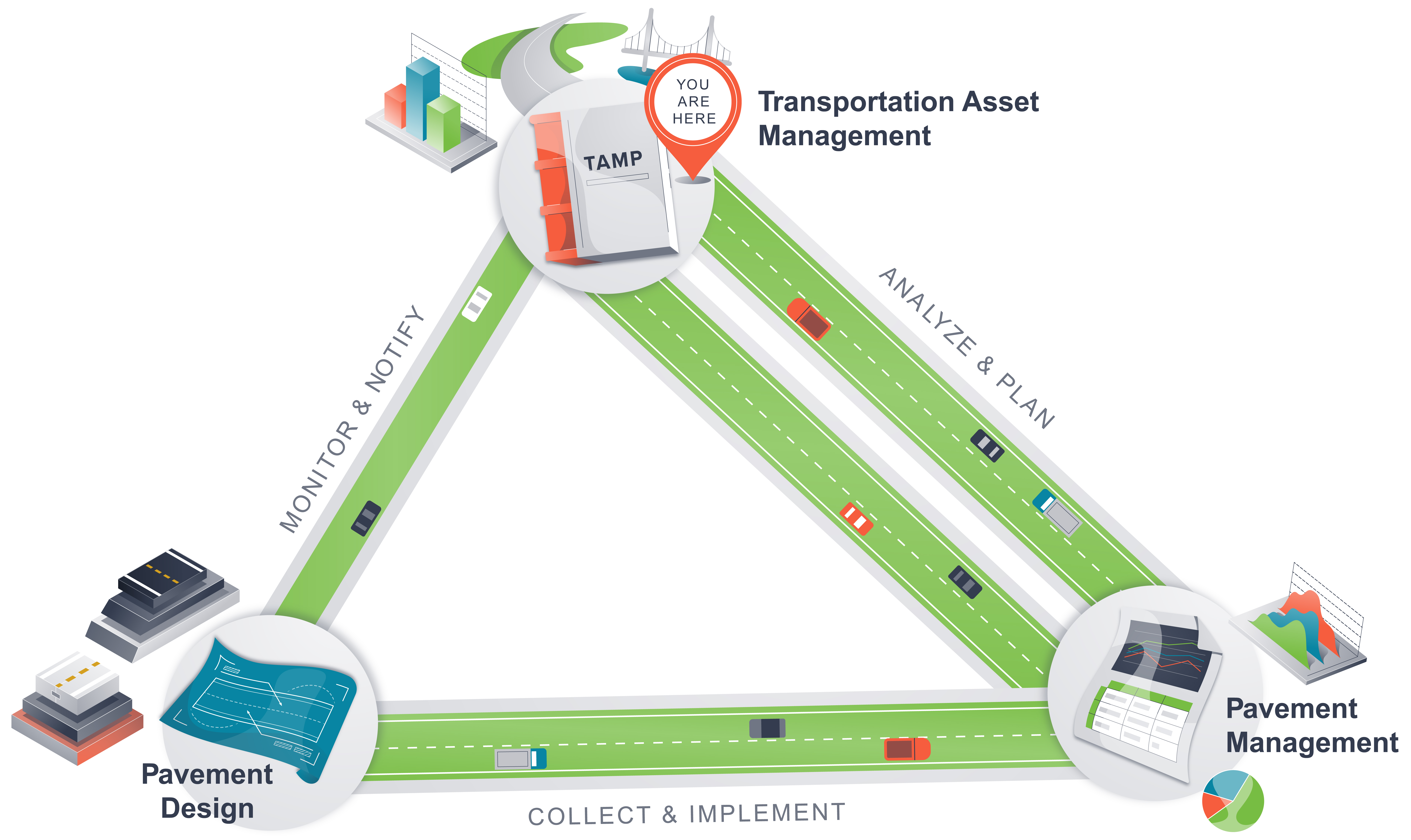Transportation Asset Management

Transportation Asset Management is defined as...
"a strategic and systematic process of operating, maintaining, and improving physical assets with a focus on both engineering and economic analysis based upon quality information, to identify a structured sequence of maintenance, preservation, repair, rehabilitation, and replacement actions that will achieve and sustain a desired state of good repair over the life cycle of the assets at minimum practicable cost." (23 CFR 515.5)
Transportation Asset Management (TAM) is an approach and a set of tools that can be applied to manage any class of asset across an entire highway network. The application of these tools is typically focused on the network level to achieve agency-wide goals. However, TAM can be applied at lower organization levels such as districts or metropolitan planning areas to help balance resources to achieve overall agency objectives.
Asset management provides a framework through which DOTs:
- Establish long-term strategies for optimizing network-wide conditions for pavements and other assets over the full asset life cycle at a minimum practicable cost.
- Justify the need for funding.
- Identify maintenance and construction projects that will align with the selected strategy.
- Track pavement (and other asset) performance.
State DOTs are required to develop risk-based transportation asset management plans (TAMP) for the National Highway System (NHS) (23 U.S.C. 119(e)). The TAMP describes how a State DOT will carry out transportation asset management (23 CFR 515.9(a)) as required under 23 U.S.C. 119(e). The TAMP is required to cover at least a 10-year period (23 CFR 515.9(e)) and include, at a minimum, the pavement and bridge assets on the NHS (23 CFR 515.9(b). However, States may also include other assets and highway networks in their TAMPs (23 CFR 515.9(c)).
Transportation Asset Management is...
- Policy-Driven
- Performance-Based
- Risk-Based
- Strategically Aligned with Agency Priorities
- Transparent
- Information-Driven/Evidenced-Based
- Option Oriented
(Source: AASHTO, 2019)
TAM involves the establishment of objectives for operating, maintaining, and improving physical assets throughout their life cycle at minimum practicable cost. Policies and procedures help to guide an agency's activities toward achieving these objectives. Agencies rely on technology and data to carry out these procedures and to inform decision-making.
TAM can support the development of reports and plans that inform decision making at all levels of the agency. In general, asset management outputs fall into the categories below.
- The TAMP. State DOTs are required to develop a TAMP that covers a minimum of 10 years (23 CFR 515.9(e)) and update that TAMP at least every 4 years (23 CFR 515.13(c)). Other agencies that are not subject to this requirement may also choose to develop a TAMP.
- Performance Forecasts. Asset management systems are used to predict asset conditions using performance models and assumptions such as future funding.
- Treatment Strategies. In additon to the long-term analyses described above, asset management analysis may also be used to develop treatment strategies for each asset class within a pavement network. These strategies are used to inform planning and programming processes that allocate funding to programs of work including capital projects and maintenance efforts. Asset management system outputs rarely lead directly to defining project scopes and do not provide the level of detail necessary for project-level pavement design.
- Financial Plan. The financial plan supports the implementation of the agency's TAMP. It provides the financial basis for the investment strategies, risk mitigation strategies, and performance forecasts described in the TAMP. The financial plan may also be used by an agency to communicate with the public and stakeholders regarding the agency's financial environment and strategies to manage assets within that environment.
- Investment Strategies. Support the implementation of the agency's TAMP by informing programming and project decisions regarding the type, timing, and level of investments that are expected to implement the TAMP. Achieve the State DOT targets for asset condition and system performance effectiveness while minimizing costs and managing risk.
New to Transportation Asset Management or want to learn more? Read the TAM report.

